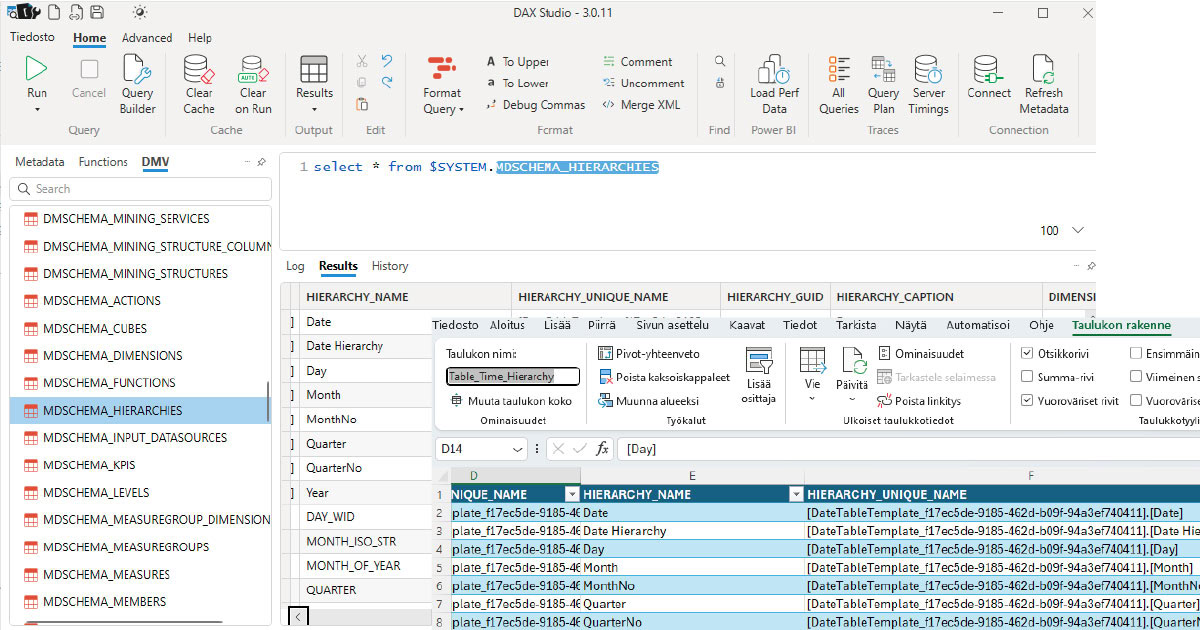Documentation and maintainability of reporting are often discussed topics in analytics projects. The aim is to avoid unnecessary documentation and achieve as much automation as possible in documenting the analytics and reporting environment.
Reporting involves various levels of documentation. This includes documentation from both end-user and developer perspectives, documentation of the dataset (semantic model), and documentation of the content within the Power BI Service. In this context, the intention is to create documentation related to the dataset.
Topics to be documented in the dataset:
- Reporting sources (databases, files, etc.)
- Tables and columns
- Measures
With Power BI, these can be easily documented using Power BI Desktop and Power BI DAX Studio tools. DAX Studio is an external tool for Power BI that needs to be installed and activated separately.
In DAX Studio, within the Dynamic Management View (DMV) perspective, there is a set of queries that allow you to retrieve metadata and export it to Excel.
- select * from $SYSTEM.DBSCHEMA_TABLES
- select * from $SYSTEM.TMSCHEMA_COLUMNS
- select * from $SYSTEM.TMSCHEMA_MEASURES
- select * from $SYSTEM.TMSCHEMA_DATA_SOURCES
- select * from $SYSTEM.MDSCHEMA_HIERARCHIES


